QuestionHi there. We have three cats currently and all are female. In 2004 we got our first cat, Mika, and she is a calico tabby mix. She was six months at the time we got her and had no problems. Approximately five to six months later, we noticed that she started to pee outside of the litter box at times. She has never pooped outside of the box. It was always in the same corner on the carpet. At that time, we brought her to the vet also because she was vomiting frequently. Lab work was done and she was given a clean bill of health but, we were told that she may be lonely as she is by herself during the day. We brought home our second female cat, Nala, who is calico and was six months old at the time. Mika continued to urinate outside the box sometimes.
We moved into a new home a few years ago and we hoped that with tile flooring it might deter her from urinating on the floor. No such luck. At one point, Mika had urinated on a pillow that sat in a chair. It took us a while to figure out where she was peeing. When we did figure it out, the chair was so saturated that we had to throw it out. This was about two years ago.
Last summer we brought home another cat, Luna, that is a tabby and approximately three months old. The two younger ones get along great but, Mika frequently hisses at Luna though they generally tolerate each other.
Usually Mika urinates on the stairs, on the tile under the table, in front of the door, and on the tile next to the litter box. We have managed to get her to pretty much stop peeing under the table and in front of the door by bleaching the floor than throughly cleaning the area with soap and water. This took us about two years and we are still unsure if it has been successful. Recently we have noticed that she has started to urinate on the couch. We were in the process of cleaning the couch when we got up the next morning to find that there was urine on it that was fresh. We know that Nala religiously uses the litter box and has to be the first one to use it when it is cleaned. Luna we are pretty sure that she uses the litter box and haven't noticed her straying away from the box. We are pretty much at a loss on what to do to retrain Mika to use the litter. We have three litter boxes and two of them are open and one that is enclosed. We have tried changing litter brands and scents and have removed all air fresheners from the area. In one area that Mika usually urinates, a puppy pad was placed. She would pee on the pad. We would then take the pad and Mika and put them both in the litter box. Although this has not worked. We love Mika dearly and don't really want to give her up although, we have no idea what to do. Also all cats have been spayed. Where she has been urinating we have been spraying the area with Petzyme (that is supposed to remove pet stains and odors) and Febreeze. Do you have any other ideas that we could try especially since we would like to keep our furniture and the cat. Thanks so much
Mandy and Jen
AnswerMandy and Jen,
What did the vet test for? The most common reason for Mika's behavior is a urinary tract infection, urinary crystals, or possibly a kidney infection (or other kidney problems including a previous injury to the kidney area or something inherited ). All would be painful and cats associate that pain with the litterbox and go elsewhere. To be on the safe side you might might want to take her to another vet for a second opinion.
Like some people, she may have an emotional problem and only she knows why she is not using the litterbox. I'm not implying that she does, I'm just covering possibilities. Another possibility is that before you got her she got scared, traumatized, or jumped by another animal when she was peeing in the litterbox which made her afraid it would happen again. If it didn't happen when she was defecating then she wouldn't associate using the litterbox with what happened (if anything).
If she is using a puppy pad, then you may need to use those for her. Try leaving them near the litterbox and see what happens. If she goes on them then you know she has an aversion to the litterbox, or she prefers a flat surface to pee on. Some cats have weird quirks. I had one that would ONLY go on newspaper...NEVER in the litterbox. I think he didn't like the feel of the litter under his paws. Trying to force them only causes stress, confusion, and more of an aversion to using the litterbox.
You can try some children's play sand in a litterbox she would normally use. You can get it at Home Depot or other building supply store. That sometimes will help. Or even regular dirt (except dirt smells bad pretty quick). Trying those 2 things will tell you if it is a litter aversion issue. I used the sand for one of my cats. He would play in it first (and make a mess!) but then he would pee in it. I gradually added regular litter to it and he was OK with it after that.
I am including a link to a good article on improper elimination:
http://cats.about.com/cs/behavioralissues/a/outsidebox_two.htm
And here is some helpful (I hope!) information on cleaning cat urine:
HOMEMADE CAT URINE REMOVER
1 quart of 3% hydrogen peroxide
1/4 cup baking soda
1 teaspoon of liquid soap
Gently mix all ingredients in a non-metal container. Do not mix or shake vigorously! The mixture is best used when fresh but can be stored. DO NOT keep mixture in an airtight container as baking soda and hydrogen peroxide when mixed together release a lot of oxygen and can cause an explosion.
The recipe is effective because the reaction from mixing hydrogen peroxide and baking soda produces large amount of oxygen. The oxygen molecules bond to the thiols, breaking them up into carbon dioxide and ammonia which evaporates quickly thereby effectively neutralizing the thoils and their foul-smelling odor.
Always check for color fastness as hydrogen peroxide can be a bleaching agent. If you don't know where an odor is coming from you might need to use a small battery operated blacklight called a 'Stink Finder' (PetSmart, Petco, etc.) at night to find the soiled areas.
HOW TO REMOVE CAT URINE ODOR FROM CARPETS
FOR INDIVIDUAL URINE SPOTS ON CARPET:
If fresh, sop up as much cat urine as you can with a paper towel first. Use a spray bottle to saturate the spot completely with the recipe - do not blot. The recipe must penerate the padding and possibly the floor boards underneath, where the urine has penerated for it to work. Wait 24-48 hours until dry then vacuum. If the urine odor is still present - repeat the procedure. It usually takes 2-3 applications to completely neutralize the cat urine odor.
FOR LARGE AREAS OF CARPET:
You can use a carpet cleaning machine using the recipe instead of the shampoo. You will need to make several gallons of the recipe depending on the size of the carpet. Don't use the vacuum part of the machine - you will want to let the solution soak and dry for 24-48 hours before vacuuming. Most carpet cleaning machines are not made for this use and baking soda can clog the nozzles of the machine.
A 1 gallon garden bug sprayer (Home Dept., etc.) works great too. Rinse the nozzle out frequently by filling the tank with hot water and spraying it in the bathtub. If using the sprayer, saturate the entire carpet with the recipe, let dry for about 24-48 hours, and vacuum. You will have to probably repeat the procedure again. Areas heavily saturated with old urine may take 3 applications over a week.
If the cat urine is old and dried, the smell will probably be worse a day or two later. This is because you are rehydrating the uric acid crystals in the urine to neutralize them. The smell will get better with each application!
MATTRESSES:
You must saturate the spot throughly to get deep down into the padding and springs to neutralize the urine. If the cat has urinated alot in one spot, the mattress can be soiled all the way to the other side! Let the area dry for 24-48 hours without bedding then reapply if necessary.
SOFAS:
The same directions as above but always check for color-fastness in a hidden area before using. Cotton is used in alot of upholstery fabrics and is easily bleached. If your sofa pillow cushion covers can be unzipped and taken off (must be color-fast and washable) you can put them in the washing machine using the instructions for clothing and bedding.
CLOTHING, COMFORTERS, AND BEDDING:
Put the items in the washing machine and pour in enough of the recipe to cover throughly. This might take a few gallons depending on the size of the load. Soak for at least 24 hours. Rinse and rewash using normal washing detergent. If any of the odor is still present, soak again for 24 hours, rinse and rewash.
A small area on a comforter can be spot treated by saturating the area throughly, letting it dry for 24 hours, then washing the comforter normally in the washer with detergent. Always check for color-fastness before using.
AREA RUGS:
They can be spot treated with a sprayer or put in the washer. Test for color-fastness before treatment.
HARDWOOD FLOORS:
When cat urine seeps into wood flooring it causes the fibrous cells in wood to swell and warp ruining the flooring planks. The only way to fix this is by replacing the wood. You can treat the wood with the cat urine remover recipe but wood is preamable and it could make the wood swell further, causing further damage.
HARD SURFACES:
Spray or mop the area soiled with the cat urine. Saturate it completely and let the area dry for 2-3 days.
I hope this information is helpful for you (and Mika).
Tabbi

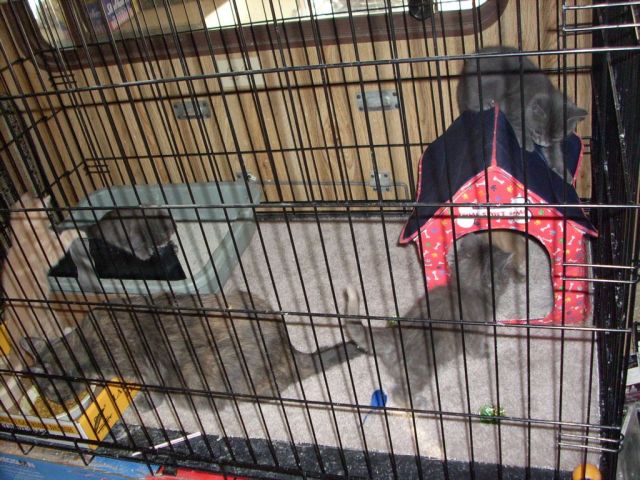 Kitten trying to run outside
QuestionI adopted a 3 month old male tabby a few days a
Kitten trying to run outside
QuestionI adopted a 3 month old male tabby a few days a
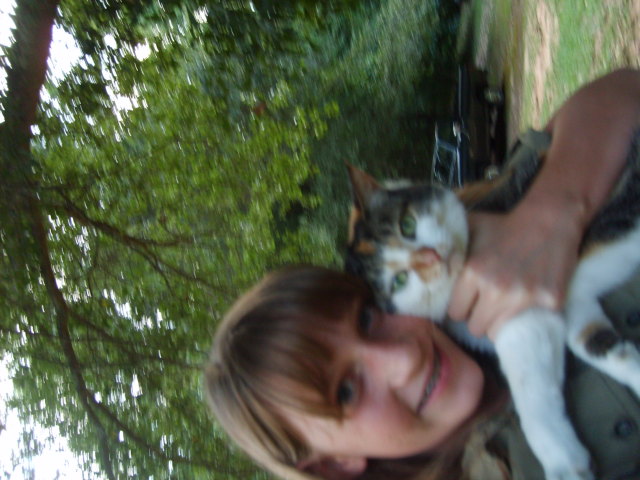 any alternatives to hunting?
Question
Lucky and me
My cat Lucky was found a stray ad
any alternatives to hunting?
Question
Lucky and me
My cat Lucky was found a stray ad
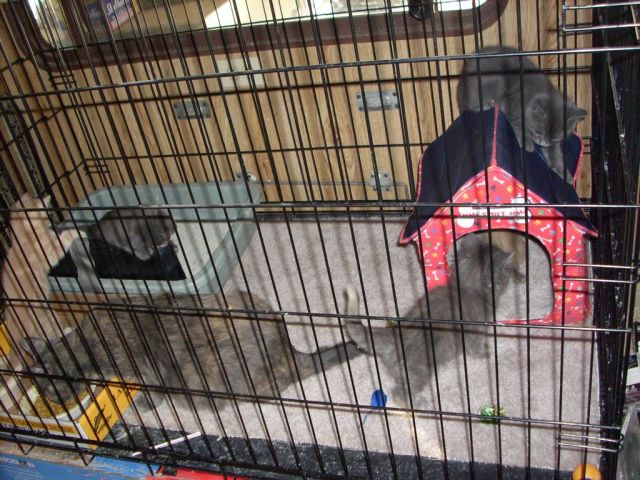 Introducing two cats of same gender
QuestionHi,
One of my friends is traveling soon and un
Introducing two cats of same gender
QuestionHi,
One of my friends is traveling soon and un
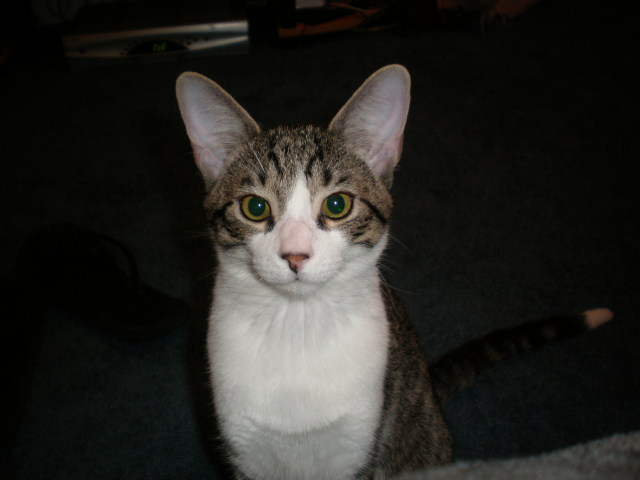 I dont understand my cat!
QuestionOliver
QUESTION: In January 2009 I got a
I dont understand my cat!
QuestionOliver
QUESTION: In January 2009 I got a
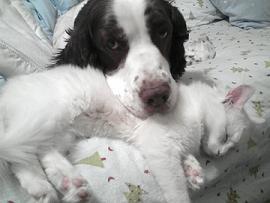 Tantrums
Question
London.
Hi.
I have a cat that is just a little
Tantrums
Question
London.
Hi.
I have a cat that is just a little